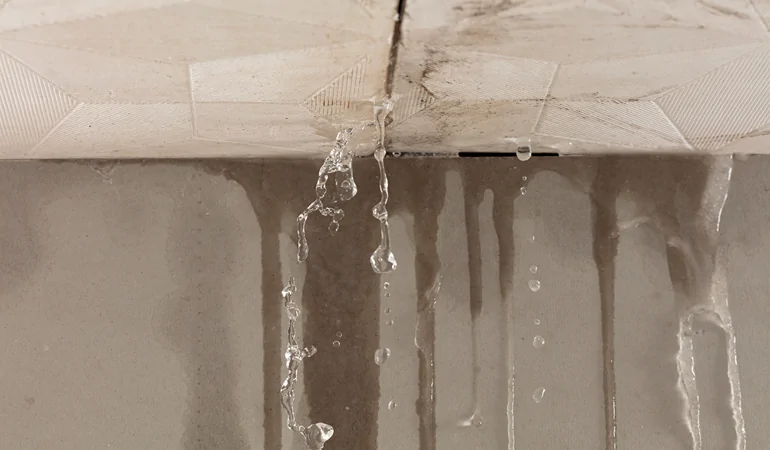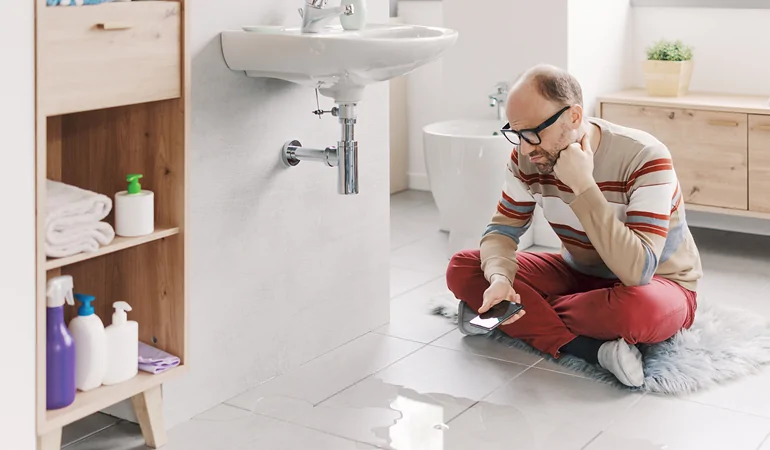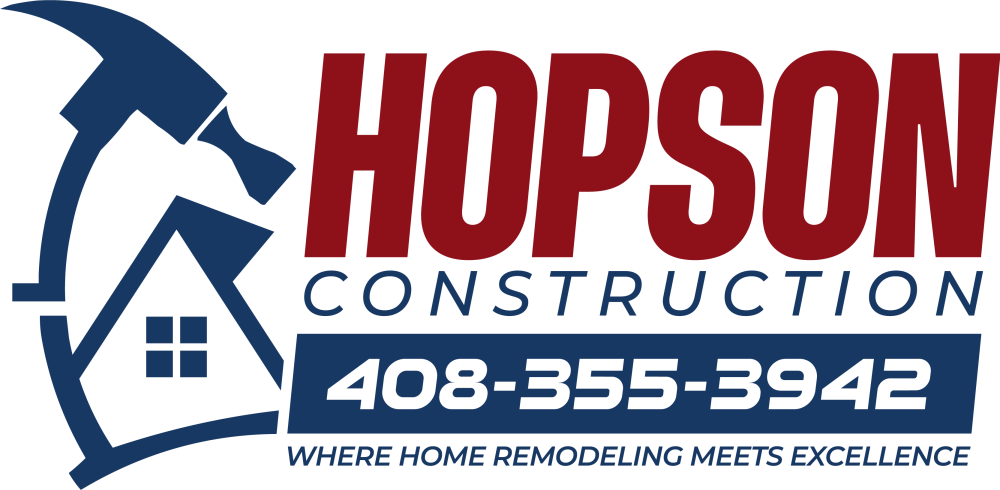Hidden water leaks can create chaos in your home, leading to costly repairs, water wastage, and even structural damage. Detecting such leaks in the early stages is crucial so further damage can be prevented, ensuring efficient and safe plumbing systems. If you are dealing with a water leak in walls or under floors, recognizing signs and understanding the right solutions for hidden water leak detection can save you time, money, and stress. This blog provides actionable tips for identifying leaks, explores professional leak detection tools, and answers common questions about plumbing inspection for leaks.
Why Hidden Water Leaks Are Dangerous

Hidden water leaks are particularly problematic because they often go unnoticed until significant damage has occurred. Here’s why detecting them early is crucial:
Structural Damage
Prolonged exposure to water can weaken walls, floors, and foundations.
Mold Growth
Excess moisture creates the perfect environment for mold and mildew, which can harm your health.
Increased Water Bills
Undetected leaks lead to higher water usage and inflated bills.
Environmental Impact
Wasted water contributes to resource depletion.
Signs of Hidden Water Leaks

Before diving into detection methods, familiarize yourself with the common signs of hidden water leaks:
Unexplained Increase in Water Bills:
A sudden spike in your bill without changes in usage habits often indicates a leak.
Water Stains on Walls or Ceilings:
Discoloration or bubbling paint is a clear sign of moisture buildup.
Musty Odors:
Persistent dampness leads to mold growth, which emits a foul smell.
Sound of Running Water:
If you hear water running when all faucets are off, you likely have a hidden leak.
Warm Spots on Floors:
This could indicate a leak in under-slab pipes.
How to Detect Hidden Water Leaks
There are many ways through which one can detect if there is any hidden water leakages in their home:
Conduct a Water Meter Test
A simple yet effective method is checking your water meter:
– Turn off all faucets and appliances that use water.
– Observe the meter reading; if it continues to move after 20 minutes to an hour, you likely have a leak.
Perform a Water Pressure Test
Low water pressure can indicate a plumbing issue or hidden leak:
– Shut off all faucets and measure the pressure using a gauge. A drop in pressure suggests leakage.
Use Food Coloring for Toilets
Toilet leaks are common but often hidden:
– Add food coloring to the tank and wait 10 minutes. If the color appears in the bowl without flushing, there’s a leak.
Inspect Walls and Floors
Look for visible signs like stains, warping, or bubbling paint on walls and floors.
Listen for Running Water
Sometimes leaks produce audible sounds like hissing or dripping through walls or floors.
Check Appliances
Inspect dishwashers, washing machines, and refrigerators for slow drips or pooling water around connections.
Professional Leak Detection Tools
If DIY methods don’t pinpoint the issue, professional leak detection services use advanced tools for accurate results:
Thermal Imaging Cameras
These cameras detect temperature changes caused by moisture behind walls or ceilings.
Ultrasonic Leak Detectors
These devices use sound waves to identify hissing or gurgling noises from leaking pipes.
Moisture Meters
Measure humidity levels in building materials to locate damp areas indicative of leaks.
Ground Penetrating Radar (GPR)
Used for underground leaks, GPR detects irregularities in soil caused by escaping water.
Common Causes of Hidden Plumbing Leaks
Understanding what causes hidden leaks can help prevent them-
Aging Pipes:
Corrosion or wear over time leads to cracks and holes.
High Water Pressure:
Excessive pressure strains pipes, causing them to burst or leak over time.
Faulty Connections:
Loose fittings on appliances or fixtures can result in slow drips.
Tree Roots:
Roots infiltrating underground pipes can cause blockages and ruptures.
Preventive Measures for Hidden Leaks
Prevention is better than cure when it comes to plumbing issues:
- Schedule regular plumbing inspections for leaks with professionals offering leak detection services.
- Install smart home devices like leak sensors that alert you when moisture is detected.
- Replace aging pipes before they fail catastrophically.
- Monitor your monthly water usage for unexplained increases.
Home Water Leak Repair Options
Once you’ve identified the source of the leak, repair options include-
- DIY fixes like tightening loose connections or replacing worn gaskets for minor issues.
- Professional repairs involving pipe replacement or sealing for more severe leaks.
Hiring experts ensures long-term solutions with minimal disruption.
FAQs About Hidden Water Leak Detection
Q.1. How do plumbers detect hidden water leaks without damaging walls?
Plumbers use non-invasive tools like thermal imaging cameras and ultrasonic detectors to locate leaks without tearing down walls or floors.
Q. 2. What tools are used by professionals for water leak detection?
Professionals use thermal imaging cameras, ultrasonic detectors, moisture meters, and ground penetrating radar (GPR) for precise leak detection.
Q.3. Can I detect a hidden water leak on my own?
Yes—methods like the water meter test, food coloring test for toilets, and visual inspections can help identify leaks without professional assistance.
Q.4 What are the common causes of hidden plumbing leaks?
Common causes include aging pipes, high water pressure, faulty connections on appliances, and tree root infiltration into underground pipes.

Conclusion
Detecting hidden water leaks early is crucial to preventing costly repairs and safeguarding your home’s structural integrity. By understanding the signs of hidden leaks, using DIY methods like the water meter test or food coloring test for toilets, and leveraging professional tools when necessary, homeowners can effectively address plumbing issues before they escalate.
Regular plumbing inspections for leaks and preventive measures like installing smart sensors ensure long-term peace of mind while protecting your property from damage.
If you suspect a hidden water leak but can’t locate it yourself—don’t hesitate to reach out to professional leak detection services!

